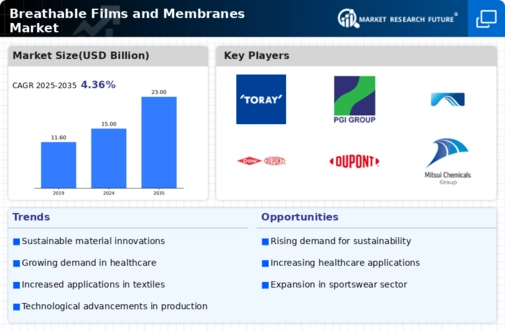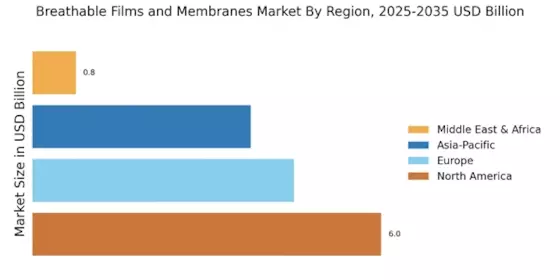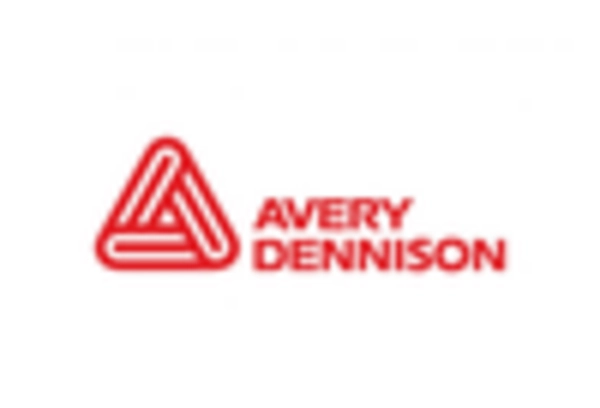Growth in Consumer Goods Sector
The Breathable Films and Membranes Market is witnessing substantial growth in the consumer goods sector, particularly in the production of breathable packaging materials. As consumers increasingly demand products that offer convenience and sustainability, manufacturers are turning to breathable films to enhance product shelf life while maintaining quality. The market for breathable packaging is expected to reach a valuation of several billion dollars in the coming years, driven by the food and beverage industry, which seeks to reduce spoilage and waste. This trend indicates a shift towards more sustainable practices, as breathable films allow for reduced reliance on preservatives and contribute to a more eco-friendly approach in packaging solutions.
Expansion in the Textile Industry
The Breathable Films and Membranes Market is experiencing expansion driven by the textile industry, particularly in the production of activewear and outdoor apparel. The demand for breathable and moisture-wicking fabrics is on the rise, as consumers seek comfort and performance in their clothing. This trend is supported by the increasing popularity of fitness and outdoor activities, which necessitate the use of advanced materials that enhance breathability while providing protection from the elements. The market for breathable textiles is projected to grow substantially, with manufacturers investing in new technologies to create lightweight and durable fabrics. As the textile industry continues to evolve, the Breathable Films and Membranes Market is likely to benefit from these developments.
Increased Focus on Sustainability
The Breathable Films and Membranes Market is increasingly influenced by a growing focus on sustainability. As environmental concerns rise, manufacturers are seeking eco-friendly alternatives to traditional materials. Biodegradable and recyclable breathable films are gaining traction, appealing to environmentally conscious consumers and businesses alike. This shift is reflected in the market, where the demand for sustainable packaging solutions is expected to grow significantly. Companies that prioritize sustainability in their product offerings are likely to gain a competitive edge, as consumers increasingly prefer brands that align with their values. The Breathable Films and Membranes Market is thus adapting to these changing consumer preferences, fostering innovation in sustainable materials.
Rising Demand in Healthcare Applications
The Breathable Films and Membranes Market is experiencing a notable surge in demand due to the increasing applications in healthcare. These materials are utilized in wound dressings, surgical drapes, and other medical devices, where moisture management and breathability are critical. The market for breathable films in healthcare is projected to grow at a compound annual growth rate of approximately 7% over the next few years. This growth is driven by the rising prevalence of chronic wounds and the need for advanced medical solutions that promote healing while preventing infections. As healthcare providers seek innovative materials that enhance patient comfort and outcomes, the Breathable Films and Membranes Market is likely to expand significantly.
Technological Innovations in Material Science
Technological advancements in material science are significantly influencing the Breathable Films and Membranes Market. Innovations such as the development of new polymer blends and nanotechnology are enhancing the performance characteristics of breathable films. These advancements allow for improved moisture vapor transmission rates and durability, making them suitable for a wider range of applications, including textiles and automotive industries. The introduction of smart breathable membranes that can respond to environmental changes is also on the horizon, potentially revolutionizing the market. As manufacturers invest in research and development, the Breathable Films and Membranes Market is poised for transformative growth, driven by these cutting-edge technologies.


















Leave a Comment